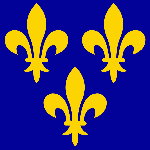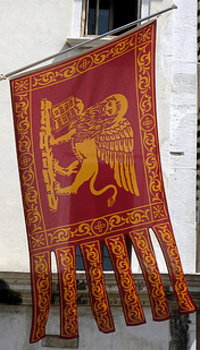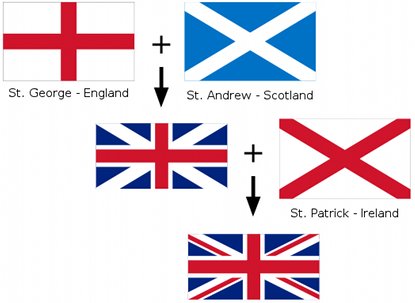Growth of Royal Governments
Explain how Europe benefited from cultural diffusion during the period c. A.D. 1000 - 1500.

Flag of France
14th - 16th centuries
With the quickening pace of the economy, the nobles of Europe, who amassed profits from trade and demesne farming, redefined themselves in a more complicated social hierarchy. This new wealth began to upset the old feudal system. Wealth was increasing based on the accumulation of money and loyalty was increasingly given to a strengthening central authority.
The Crusades were vast undertakings which required unprecedented organization and communication. To have any hope of success, a Crusade required some form of central leadership. This provided the royalty of Europe with a great opportunity to expand their power by consolidating the nobles under them.

Venetian Flag
A sense of national identity began to emerge and England, France, and Germany start viewing themselves as nation - states. The Italian Maritime Republics of Venice and Genoa increasingly gain political and economic influence reminiscent of the polis of Ancient Greece.
The huge expenses of the Crusades required a whole new system of government finance.
National tax systems were established and rapidly become more important than feudal taxes.
Money replaces in kind
& labor taxes.
Royal taxation constantly improved during the period of the Crusades. One example is when the English king, Henry II, levied the
Saladin's tithe
, a 10 percent tax on his subjects and clergy,
to support the military monastic orders and the Kingdom of Jerusalem.

Henry II of England
October 25, 1154 - July 6, 1189
In 1231, Frederick II of The Holy Roman Empire established the first gold standard in Europe. Florence & Venice soon followed. Henceforth, a definitive monetary system was respected and followed. This not only led to easier trade transactions, but also increased wealth for the emerging national governments.
A comparison in the financing of Crusades conveys a sense of the extent of economic and political change in the 12th century.
In 1096, five noble families were needed to send one soldier to the First Crusade. They had to mortgage estates to relatives or moneylenders to raise cash.
By 1190, King Richard I of England and Philip II of France could simply tax their clergy and their population to fund the Third Crusade. In 1250, Louis IX paid in ransoms for the Seventh Crusade 800,000 livres tournois, or 192 million deniers.
Such sums of money, and the royal fiscal institutions to collect them, were a testimony to European economic and political growth in the era of the Crusades.

The Union Jack - Modern flag of Great Britain
This is Cultural Diffusion!
St George's Cross was originally the flag of Genoa and was adopted by England and the City of London in 1190 for their ships entering the Mediterranean to benefit from the protection of the powerful Genoese fleet.
The maritime Republic of Genoa was rising and going to become, with its rival Venice, one of the most important powers in the world. The English Monarch paid an annual tribute to the Doge of Genoa for this privilege.
It was adopted for the uniform of English soldiers during the Crusades of the eleventh, twelfth and thirteenth centuries, particularly by the Knights Templar. From about 1277, it officially became the national flag of England and Wales.
